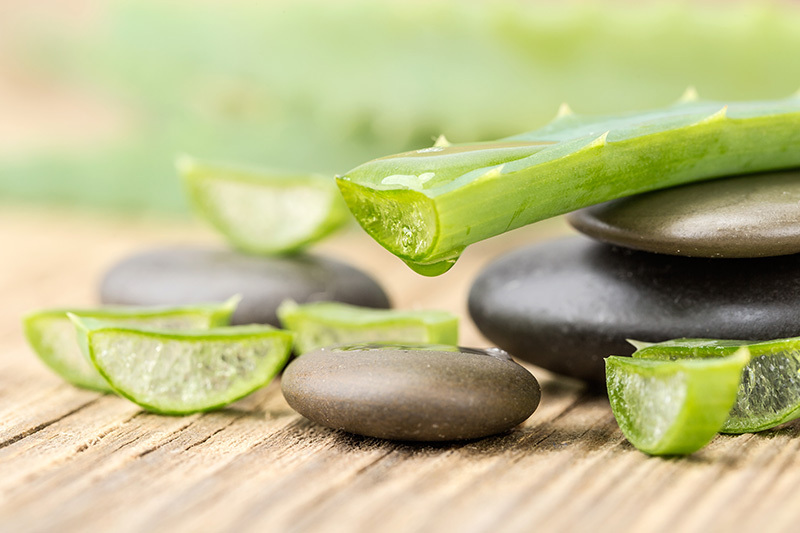Learn the Secrets to Prolonging Flower Life Effortlessly
Posted on 14/08/2025
Learn the Secrets to Prolonging Flower Life Effortlessly
There's nothing quite as delightful as a fresh bouquet brightening up your home. But have you ever wished your blooms could last just a little longer? With the right knowledge, extending the life of cut flowers becomes a simple - even enjoyable - part of your floral routine.
In this comprehensive guide, we'll unveil the secrets to prolonging flower life effortlessly. Whether you're a seasoned plant enthusiast or a casual flower admirer, these expert tips and methods will keep your arrangements vibrant and beautiful for days, or even weeks. Read on to transform your approach to flower care and discover how to make your fresh flowers last longer than ever before.
Understanding the Factors that Affect Flower Longevity
To master the art of effortlessly extending the life of your flowers, it's essential to first grasp the factors that contribute to their early wilting. Flowers, after all, begin dying the moment they're cut from their host plant. But why do some arrangements fade rapidly, while others stay lovely for so much longer?
- Species and Variety: Certain blooms, such as carnations and chrysanthemums, naturally have longer vase lives. Delicate varieties like poppies or tulips wilt faster.
- Water Quality: Dirty or contaminated water promotes bacterial growth that can clog stems and reduce water uptake.
- Temperature: Excess heat accelerates wilting; cooler environments help flowers last longer.
- Light Exposure: Direct sunlight can quickly dehydrate cut flowers and fade colors.
- Ethylene Gas: This often-overlooked plant hormone, released by ripening fruits and decaying flowers, can hasten petal drop and decay.
By addressing these factors, you can set the stage for long-lasting beauty in your floral displays.

Essential Preparation: The First Steps to Prolonging Fresh Cut Flowers
Proper initial care is critical in prolonging the life of flowers. Follow these expert-approved steps the moment you receive or purchase a bouquet:
Inspect and Trim the Stems
- Use a clean, sharp knife or scissors: Dull tools can crush stems, inhibiting water absorption.
- Cut at a 45-degree angle: This increases the surface area for water uptake and prevents the stem from sitting flat at the bottom of the vase.
- Trim underwater: Cutting stems while submerged helps prevent air bubbles from forming, which would block uptake.
Remove Lower Leaves
Any foliage below the water line can quickly rot, encouraging bacterial growth. Remove these leaves before arranging your flowers to keep the water clean and clear for longer.
Clean Your Vase Thoroughly
Don't overlook the importance of a sanitized vase when aiming for ease in prolonging flower life. Wash with hot, soapy water to eliminate lingering bacteria and allow your blooms to start in a hygienic environment.
Optimal Water and Nourishment: What to Add & What to Avoid
Use Fresh, Room Temperature Water
Cold water can shock blooms, while hot can speed up their demise. Fresh, room temperature water is best for maximum vase life. Top up your vase daily, replacing water entirely every 2-3 days.
Flower Food: Fact or Fiction?
Many bouquets come with a packet of commercial flower food. These packets aren't a gimmick--they contain a blend of sugar (for nourishment), acidifiers (to lower pH), and biocides (to inhibit bacteria and fungi). Using them correctly according to instructions truly does help prolong the lifespan of cut flowers.
Homemade Solutions
Out of flower food? Some household alternatives can mimic the effects:
- Mix 1 teaspoon sugar (energy for blooms), 2 teaspoons lemon or lime juice (acidity), and half a teaspoon of bleach (to control bacteria) per liter of water.
- A drop of clear soda (like Sprite) can also substitute for sugar and acid.
Avoid copper pennies, aspirin, or vodka--these are popular myths but don't reliably extend flower life compared to proven methods.
The Ideal Environment for Prolonging Flower Life
Where--and how--you display your bouquet significantly impacts its longevity. For effortless flower care, use these guidelines:
- Place arrangements in cool locations, away from heat sources like radiators or TVs.
- Keep flowers out of direct sunlight to prevent rapid dehydration.
- Avoid drafts and sudden temperature fluctuations which can stress flowers.
- Don't display close to ripening fruit (bananas, apples, avocados, tomatoes), as these release ethylene gas.
An often-overlooked tip: move your flowers to the refrigerator overnight. Chilling slows respiration and water loss, resulting in noticeably longer-lasting bouquets--especially for roses, tulips, and other delicate varieties.
Regular Maintenance: Daily Habits for Fresh Flowers
Prolonging the vase life of cut flowers is all about minimal, consistent care. These daily habits make all the difference:
- Change the water every two days or sooner if it appears cloudy.
- Re-cut the stems by an inch each water change to maintain optimal water absorption.
- Remove wilting flowers promptly--they release more ethylene gas and can infect others quickly.
- Gently mist blooms (especially if your home is dry) to keep petals hydrated, but don't overdo it as this can promote mold.
- Rotate the vase occasionally to allow even light exposure.
Proactive Cleaning
Keep both the vase and water scrupulously clean. Even trace amounts of bacteria can reduce the lifespan of delicate petals, so don't be afraid to wash and rinse your vessel frequently.
Special Tricks for Extending the Life of Specific Flowers
While the general rules of flower care apply to most blooms, some varieties benefit from tailored techniques. Here's how to make your favorite flowers last longer:
- Tulips: Tulips keep growing after being cut! Support them with a tall vase, and drop a copper penny in the water to encourage upright stems (copper gently strengthens cell walls).
- Roses: Remove thorns below the water line. If roses droop, submerge the entire stem and bloom in warm water for 30-60 minutes to revive.
- Hydrangeas: These require lots of water. Submerge the blooms tip-first in water when they droop, and consider adding alum powder to the stem ends to prevent wilting.
- Daffodils: These secrete a sap toxic to other flowers. If mixing, let daffodils stand alone in water for 24 hours before combining with other fresh flowers.
- Lilies: Remove pollen anthers gently with tissue to avoid staining and extend bloom life.
Effortless Solutions: Low-Maintenance Ways to Prolong Flower Life
Pressed for time? You can still keep your flowers fresh longer without a meticulous routine:
- Buy heartier blooms (carnations, alstroemeria, chrysanthemums) which naturally last 2-4 weeks with minimal care.
- Opt for arrangements with unopened buds--these will open gracefully over time and extend the display.
- Choose professional floral foam arrangements which hold water and provide reliable hydration.
- Use self-cleaning vases or frequent water change reminders via smart home assistants.
Common Mistakes that Shorten Flower Life
Even seasoned flower lovers sometimes fall into traps that diminish the lifespan of their arrangements. Avoid these frequent errors:
- Neglecting to re-cut stems regularly.
- Leaving leaves in the water.
- Using dirty vases or cloudy water.
- Exposing flowers to direct sunlight or heat.
- Ignoring the type of flower and its unique care guidelines.

FAQ: Effortless Flower Care for Lasting Blooms
How long should cut flowers last with proper care?
With optimal conditions, most cut flowers last 7-14 days. Hardy varieties can last up to a month. Regular maintenance and proper environment are key to achieving these results.
Why do my flowers wilt after just a few days?
Early wilting is often due to bacterial-laden water, failing to trim stems, or excessive heat/sunlight exposure. Review the preparation and daily maintenance steps above to effortlessly increase flower life.
Is adding sugar, aspirin, or soda to flower water effective?
Sugar provides a carbohydrate source, but should be balanced with acid (lemon/lime juice) and a biocide (tiny bleach drops). Aspirin's effectiveness is inconsistent--commercial flower food or the homemade blend detailed above are more reliable.
How can I revive wilting flowers?
Try recutting the stems at an angle, changing the water, and submerging limp flowers in cool water for 30 minutes. Remove any wilted foliage, as decaying materials accelerate bloom decline.
Conclusion: Unlock the Joy of Long-Lasting Flowers
By applying these secrets to effortlessly prolonging flower life, you don't just save money--you enhance the beauty and spirit of your living space. Thoughtful care, clean water, the right nutrition, and a gentle environment create the perfect climate for flowers to thrive long beyond their typical vase lives.
Embrace these techniques and let every bouquet become a lasting testament to your appreciation of nature's fleeting beauty. Whether enjoying flowers for home decor, special occasions, or self-care, these expert strategies will ensure your blooms remain vibrant and fresh--effortlessly--for days on end.
Ready to transform your flower care routine? Start today and witness the colorful results--your flowers will thank you!
Latest Posts
Seek the Bloom That Captures Your Authentic Self
Learn the Secrets to Prolonging Flower Life Effortlessly
No Green Thumb Needed: 10 Best Easy-to-Care-For Office Plants
How Nature's Blooms Enhance Feelings of Positivity
Dive into the intriguing meanings behind your birth month flowers





